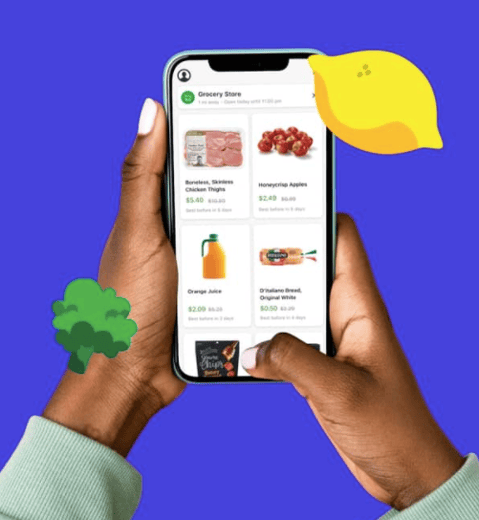STORIES ABOUT HOW TECHNOLOGY IS MAKING THE WORLD A BETTER PLACE.
The global tech community is mobilizing to help Ukranians…
Tech workers around the world are donating something besides money to help the people of Ukraine: their skills. Developers, designers, programmers, and engineers are building platforms to help Ukrainian refugees find shelter and remote work. An organization called Tech To The Rescue is matching skilled tech workers with NGOs and charities to help them digitize critical humanitarian aid and relief efforts. And the nonprofit Ukraine Tech Collective is offering developers a way to “skill swap” with their Ukrainian peers so they can continue to earn money and support their families while they defend their country. YOU CAN GET INVOLVED, TOO! Click below for a comprehensive list of resources for how you can put your expertise to work during this crisis. Bookmark it – the page is constantly being updated with new initiatives.
The laws of UX design, beautifully explained…
As human beings, we follow certain unwritten cognitive rules to help us perceive the world around us and process information – and that includes the way people experience that awesome new website or app you just designed. But sometimes, designers don’t always consider human psychology and problem solving, making the user experience less intuitive and even less engaging. That is, they don’t follow the laws of UX. Like Hick’s Law. The Law of Proximity. Or Postel’s Law, aka the Robustness Principle. UX designer Jon Yablonski put together an elegant interactive guide that makes these laws more accessible and understandable (no legalese here!) to help designers create more intuitive, human-centered digital experiences.
Warning: this product designer’s portfolio may cause intense laughter and hurt feelings...
It’s the best one we’ve ever seen.
The path to personalization runs through “intelligent experience engines”...
Back in the day, personalization used to mean sending emails to <FIRST NAME> or your website making recommendations based on a customer’s past purchase data. Now, companies across industries – including Nike, Stitch Fix, Home Depot, sweetgreen, and Starbucks – are delivering personalization at scale in ways we’ve never seen before. They’re using advanced AI technology powered by vast amounts of customer data to build “intelligent experience engines” that can deliver and optimize exceptional end-to-end customer experiences across every physical and virtual touch-point. The complexity and cost of investing in this level of AI-based personalization can be high, but so are the payoffs. Research has shown that companies that have invested in building intelligent experience engines over the past five years have seen increases in revenue up to 10%.
Make personalization your competitive advantage>
The story behind ProPublica’s visual storytelling design...
Visuals and layout design are essential for digital news outlets to tell impactful stories and elicit emotion from readers. The New York Times, The Washington Post, and others are aligning UX design with journalism to keep readers engaged (and, for many, as a way to increase subscriptions). ProPublica, the nonprofit newsroom, recently redesigned its article design system, taking elements like image size and position, text wrapping, and responsive grids into careful consideration. The design team did it all on a no-code platform, building structure and positioning options into their CMS so that ProPublica’s editors don’t need coding skills to use the story layouts. For the more code-savvy, the team developed an open-source tool, called Column Setter (recently updated with new features here), for even more customized editorial design. The key was balancing a wide range of layout options (616 to be exact!) without being too overwhelming.
Go inside ProPublica’s new design>
Our Team’s Pick for App of the Month: Flashfood
Lower food waste, $ave money, help the environment...
Food for thought: each year, America wastes between 30%-40% of our food supply. Supermarkets alone are responsible for 10% of that. Billions of pounds of wasted food are left to rot in landfills annually, releasing methane – a more harmful greenhouse gas than carbon dioxide. This is happening as food prices keep going up and more than 10% of U.S. households are food insecure. We love apps that tackle multiple problems at once, which is why we’ve downloaded Flashfood and added it to our home screen. This free app (which just secured $12.3 million in Series A funding to further expand in the U.S.) is helping to cut down on this wasted food and cut costs for shoppers at the supermarket. You can easily browse and buy fresh produce, fish, meat, dairy, bakery items, and more that are close to their “best before” date – all at majorly discounted prices. The app also lets you schedule grocery pickup times and keep tabs on your grocery savings.
Building a new website or app? Hold on. Ask yourself these 5 questions first…
So you’re thinking about making a new app or website. (Congratulations!) It takes guts, grit, and gumption. Not to mention money. And talent. It’s a long and twisty road ahead that’s covered in speed bumps, stop signs, detours, and could very likely lead to a dead end. (Don’t panic!) You can increase your chances of success by asking yourself some important questions before you start. For instance, do you know how to play to your strengths, shore up your weaknesses, and use both to your distinct advantage? Are you being realistic about the time it will take to build and launch your product and how you plan to get it in front of enough people? Are you willing and prepared to change directions when things don’t go exactly as you planned? (Because they never will.)
Subscribe to The Next Great Thing newsletter
%20(1)%20(1)%20(1).jpeg?width=300&name=wonder%20hero%20(8)%20(1)%20(1)%20(1).jpeg)


COMMENTS